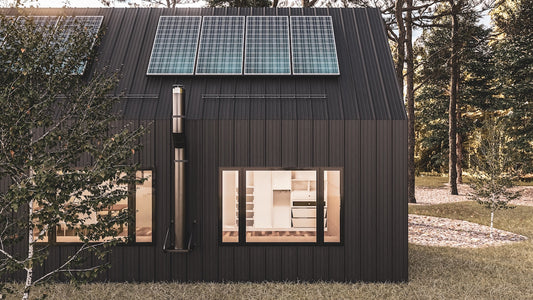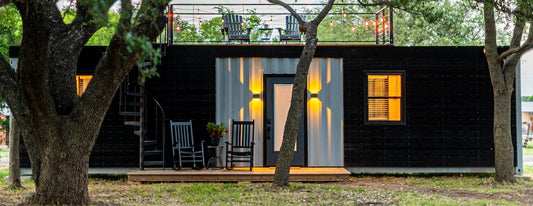If you're looking to buy land but don't have the full amount needed for the purchase, you may be able to finance the land purchase through the owner. If you are having trouble securing financing, owner financing may be the answer. There are several primary types of owner financing: “Balloon” or “Simple Interest”.
A balloon mortgage allows the borrower to make lower or no payments for a specified period of time - sometimes only paying the interest - while the remaining balance is deferred.
This results in smaller, more manageable monthly payments (or no obligation at all for a specified period of time). But at the end of this period, a balloon payment for the deferred amount comes due, potentially costing the borrower much more than they’re able to pay at one time.
In simple interest calculations, the current principal amount is multiplied by the current interest rate. But as you pay down your principal with each monthly on-time payment, that principal decreases, lessening the interest assessed. In addition, if you pay more than the minimum payment, the principal will decrease even more.
What is owner financing?
Owner financing is a type of financing in which the seller of a property finances the buyer's purchase. In other words, the seller acts as the ‘lender’. The seller becomes the bank and extends you, the ‘borrower’, a loan for the purchase price of the property. This can be a great option for buyers with less-than-perfect credit, as there are no credit checks or extra fees involved.
How does seller financing work?
When you're considering owner financing, there are a few things you should keep in mind. First, you'll need to negotiate the terms of the loan with the owner, including the interest rate, repayment schedule, and any other conditions. It's important to get everything in writing so that there are no misunderstandings later on. You'll also need to be sure that you can make the payments on time and in full.
How does seller financing work?
Under a seller financing agreement, the buyer and seller will agree on a purchase price for the property and the terms of the financing. The buyer will make payments directly to the seller, and the seller will hold the title to the property until the loan is paid in full. Once the loan is paid, the title will be transferred to the buyer.
The pros and cons of owner financing
For buyers, owner financing can be a good option if they are unable to get traditional financing, such as a mortgage. It can also make the purchase process easier and faster, since there is no need to go through a bank or other lender. And, in some cases, the interest rate on an owner-financed loan may be lower than the interest rate on a traditional loan.
Some of the additional pros of owner financing include the ability to negotiate terms and have a shorter loan term. However, some of the cons of owner financing to consider include the lack of safety net if the lender defaults or the fact that the land can be taken back if the borrower does not make payments. In case if the lender is a company, you have more safety built in especially if the company has existed in the business for a longer time.
If possible, verify the credibility of the seller, you can do that online as very often you will be able to find some information about the owner - a person or a company. If the seller is a company you can check if the company is indeed registered with a State within the United States of America. Every state has an official company registration site, just enter the company name and you will get the company information such as owner names, address, date when it was grounded and where it is registered, etc.
With some owner financing options, should you decide to repay the property before the end of the term, most of the time you can do that anytime without any additional fees involved. No questions will be asked and the title transfer will be immediately initiated.
It is important to carefully consider all of the pros and cons before deciding if owner financing is right for you.
How to get started with owner financing
- Look for sellers who are willing to offer owner financing. This can be done by searching online or contacting a real estate agent.
- Be prepared to make a down payment. This is typically 10-30% of the purchase price.
- Ask seller financing conditions for the property. Provide your preferences such as down payment, financing duration.
- Negotiate the terms of the loan with the seller. This includes the interest rate, repayment schedule, and any other terms such as the start date for the installments, down payment date, etc.
- Get the loan agreement in writing and if you have some questions clarify with the seller to make sure you understand the terms. Don’t forget to check with your attorney should you have some legal concerns.
- Sign the seller-financing agreement, which will also be signed by the seller. Now both parties have committed to a transaction.
Conclusion
Owner financing is a great way to finance your land property if you have trouble securing a loan from a bank. The owner of the property acts as the bank, and you make monthly payments to them instead of a financial institution.
The major benefit of this arrangement is that it allows you to purchase property without a good credit and that banks mostly do not provide loans for only vacant land. Check with your seller for conditions of financing to find the best option fitting your needs and follow-through with the process to become a proud owner of your beautiful land property.
Don’t forget to read more about types of financing in our next blog “Getting Financing for your land”.





